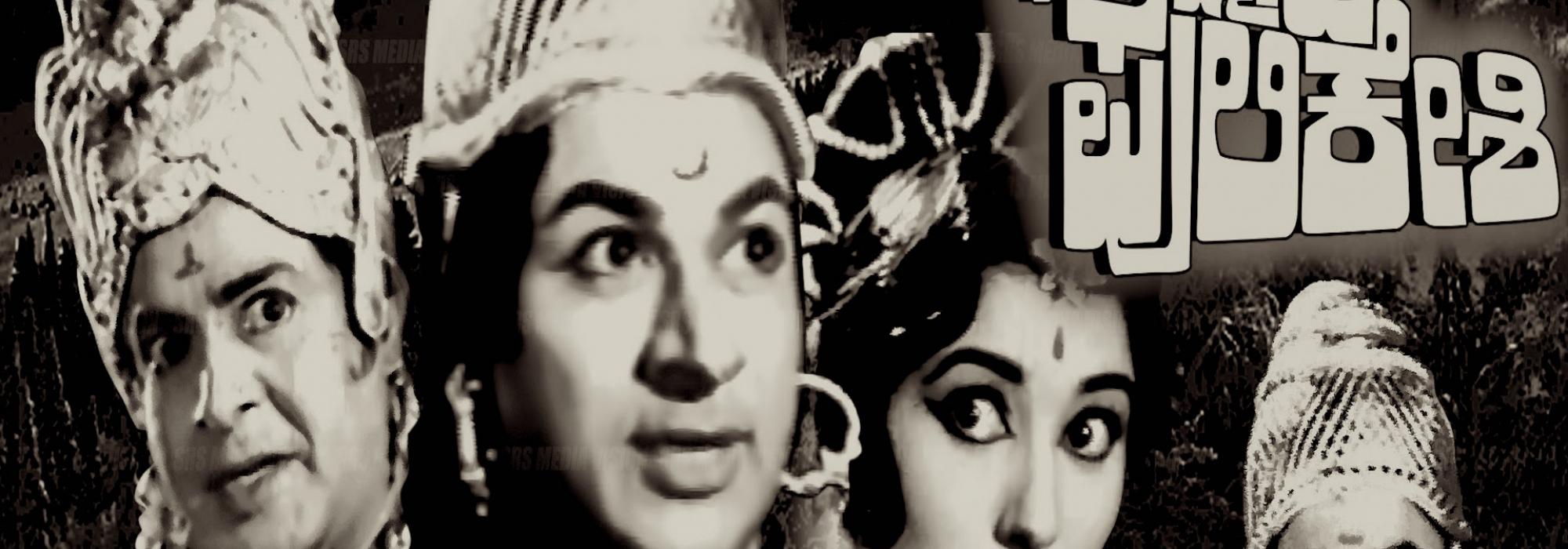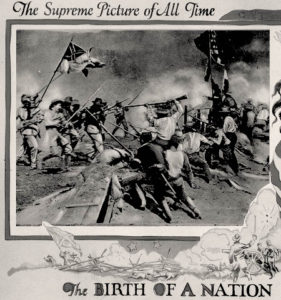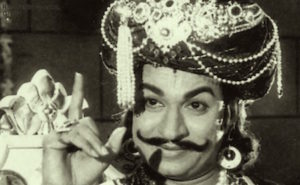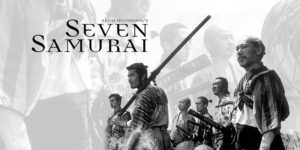As with other elements that were borrowed by cinema from various realms of existing art forms like poetry, ballads, epics, novels and drama, history as a theme, too, made inroads into the world of celluloid. Like cinemas that have epics, mythology, legend, and adventure as themes, historical themes or “period drama” (as it is now called) are attractive both to the filmmaker and viewer for the scope, scale, and canvas they offer.
By adapting a certain historical episode, a famous person, or even an imaginary situation set against a real historical backdrop, the filmmaker gets an almost infinite canvas on which to create extravagant settings, lavish costumes, exaggerated sequences, sweeping spectacles, grand musical scores, and overwhelming human drama.
The chief appeal of period dramas lies in the innate curiosity and yearning in human beings to travel back in time to learn and perhaps “live” in the cities, palaces, temples of the past, to roam in the lanes of history and interact with and learn the stories of their ancestors. Given that this is impossible, fiction, drama, and films satisfy this vicarious curiosity for however brief a duration.
But to the filmmaker, this presents a huge challenge due to the fact that he/she needs to recreate an entire period keeping all the period-specific details intact. But the greater challenge is this: no matter how accurate the research is, no matter how finely all the settings, costume, etc have been recreated, it ultimately boils down to the maker’s imagination when this research has to be translated into the visual medium. There is a thin line that separates a historical film from lapsing into neither a documentary nor a compelling narrative involving human drama.
Two examples of this lacuna in Indian cinema including the 1974 Kannada movie titled Maadi Madidavaru and the 1994 Hindi movie titled 1942: A Love Story. The latter movie, labelled as a “historical love story” was a commercial success but its central love story could’ve been set in any period. It was actually a recast of the highly successful Kannada movie, Mysooru Mallige, set in the backdrop of freedom, which has a fair degree of historical accuracy.
In this backdrop, it is relevant to briefly compare how period dramas have been treated in world cinema in general, then in Indian cinema and examine the role and contributions of Kannada cinema to the genre of historical films.
The West which gave cinema to the world also gave it the first historical in the form of the 1915 motion picture titled The Birth of a Nation. Made by D.W. Griffith, it was an explicitly racist and bigoted film that justified the cruelties upon the Black slaves and upheld the “values” of the White Man’s Burden. President Woodrow Wilson watched it in a private screening at the White House and remarked that “it's like writing history with lightning. And my only regret is that it is all terribly true.” From that movie to the acclaimed Ben Hur, The Fall of the Roman Empire, Lawrence of Arabia, Omar Mukhtar, Spartacus, Patton, The Last of the Mohicans, Schindler’s List, Gladiator, All the President’s Men, JFK, Gladiator, Braveheart, and even the notorious Caligula, Hollywood has straddled an entire gamut in the genre of historical movies ranging from ancient Rome to 20th Century Europe, World War II films, and the political and military scandals and wars of contemporary America.
In general, there’s a fundamental difference between period films produced by the West and in Indian cinema. In such a rich genre, the repertory of Indian cinema is rather lacking in number. This owes to several important reasons one of which is that there seems to be a taboo against touching certain historical subjects for fear of generating controversy. But the other significant reason is the perspective towards history as we shall examine later in this paper. It will suffice to say that it is for this reason that a movie like Gandhi was made in Hollywood and not in India by Indians.
From the early days of Indian cinema, historicals have tended to generally fall in these categories:
- Glorification of an emperor, king, queen or dynasty
- Love stories and tragedies occurring in the period or rule of a certain king or dynasty or period
- A fictional character set in a specific historical period
- Lives of poets, sages, and celebrated Bhaktas or saints,
- Of late, biopics of our freedom fighters have interested a good number of filmmakers.
Almost without exception, Indian historicals have tended to be little more than costume dramas complete with extravagant sets, grand spectacles, and extraordinary music. This is no doubt a holdover from the ancient Indian tradition of drama, which invariably were centred around epic and mythological themes. But with very few exceptions, most Indian historicals set in the era of monarchy have succeeded in recreating the physical details, and even the historicity of the period in question including the use of linguistic idiom. Characterizations are equally black and white and typically lack nuance. An honourable exception is Sri Chandraprakash Dwivedi’s tele serial Chanakya, which is largely faithful in these aspects.
But from the perspective of providing entertainment and the ability to exploit the potential of celluloid, Indian historicals have reasonably stood the test of time. The movies in this genre especially made in the 1950s through the early ‘70s genre continue to remain classics, and their numbers are greater in South Indian cinema than Hindi cinema. This success again owes to the long experience and tradition of enacting stage dramas characterised by extravagant sets, richness of costumes, melodious music and the sheer screen presence, body language and dialogue delivery of the actors. All of these factors contributed to heighten and elevate human drama, which in turn resonated with an audience which was willing to set aside historical and other inaccuracies aside as long the movies delivered ample entertainment.
In the realm of non-Kannada Indian cinema, this list is populated by movies like Mughal-e-Azam, Amrapali, Jhansi ki Rani, Baiju Bawra, Tansen, Sikandar, Shatranj ke Khiladi, Jodhaa Akbar, Bajirao Mastani, Tenali Ramakrishna, Chanakya Chandragupta, Tandra Paparayudu, Mahakavi Srinatha, Gautamiputra Satakarni, Veerapandya Kattabomman, Pazhassi Raja, and numerous others.
When compared with the rest of Indian cinema, the repertory of Kannada filmdom has contributed substantially to the genre of period drama since the fledgling days of its inception. The rest of this paper will attempt to objectively examine the contributions of the Kannada cinema industry to the genre of period drama by citing several representative examples.
Beginning with the now forgotten 1948 film titled Bhakta Ramadas starring Kemparaj Urs to the recent Allama, the genre of period dramas has passed through a chequered and interesting history. Bhakta Ramadas is based on the 16th century Telugu minister and Rama devotee, Kancherla Gopanna.
But the film that truly spurred the Kannada cinema industry in the direction of historicals was the 1960 film, Ranadheera Kanteerava. This was produced as a joint venture under the banner of “Kannada Chalanachitra Kalavidara Sangha” at a time when the Kannada cinema industry was facing severe financial crises. Its enormous success not only re-instilled confidence in the Kannada cinema industry but inspired other historicals in quick succession.
While Ranadheera Kanteerava is not without historical inaccuracies and a confused plot development, it stands tall even today as a sort of guidepost to making compelling historical dramas in Kannada. The chief merit of Ranadheera Kanteerva is the level of authenticity in several key aspects.
The first is the Kannada language used during Kanteerava Narasaraja Wodeyar’s days both by the royalty and the common people. To a keen student of the inflections that Kannada has undergone, this forms a useful study. Equally authentic are the depictions of the protocol, manners, customs, and traditions of palace life. The movie also brings out a few nuances of palace intrigue, tangentially touches upon some aspects of the administrative machinery, and the system of espionage by weaving them together in a rather dramatic fashion.
This level of detail was made possible due to extensive research and first hand knowledge of the Mysore palace life that the film’s writer Sri G.V. Iyer possessed. But the film’s biggest weakness is the unhistorical thread that dominates much of the film: the doomed love story between Narasaraja Wodeyar and the leading lady played by Smt. Leelavati. This not only takes away the plot space that could’ve otherwise been filled with fleshing out the king’s other important legacies of extending the borders and culture of Mysore to various parts of South India, as well as creating much of the symbols associated with the Mysore Wodeyar empire.
Another historical by the same team of director N C Rajan and writer G V Iyer was Immadi Pulikeshi, a major commercial success. Compared to Ranadheera Kanteerava, this movie moves rather far away from the recorded history of the greatest Chalukya emperor, Pulikeshi II.
It is more in the nature of a legend glorifying Pulikeshi II in a largely fictional setting. Indeed, when one observes the entire plot, at least as it unfolds in the first half, it becomes clear that the vacillating affections between Pulikeshi and his brother Vishnuvardhana is rather unconvincing as also the subplot involving Buddharaja who sacrifices his life for his king. So are the series of palace intrigues instigated by the scheming minister Rahu, perhaps a symbolic name after the planet Rahu known for its evil effects on people.
Equally, the characterisation of Vishnuvardahana as an unstable and gullible prince appears rather as a caricature. Also, the death of Vishnuvardhana in battle is clearly a device of the writer/director to heighten drama. And it is drama, and not recorded history that made the movie a success. What can be said in favour of the movie is the intent of its makers to highlight the glory of one of the greatest empires of Karnataka. And as a trivia of sorts, Vijayendra Prasad, the story writer of Bahubali: The Beginning was inspired by the introduction scene of Dr. Rajkumar in Immadi Pulikeshi to adapt it while introducing Prabhas in his movie.
One can also briefly turn to Veera Sankalpa, written, directed and produced by the prolific Hunsur Krishnamurthy, who also essayed the lead role. The movie declares before the start that it is loosely based on the oral legends about the heroism of Lakshamana Nayaka or Yecchamma Nayaka, the loyal commander of Venkatapati Raya I. It is set in the period following the demise of the Vijayanagara Empire after the Talikota Battle when the remnants of the Aravidu dynasty ruled from Penugonda and Chandragiri near Tirupati. Purely from the perspective of a period drama, it has little by way of history and can be regarded mostly as a legend involving a tale of heroism, bravery, courage, sacrifice, and loyalty on the lines of say Braveheart, King Arthur, Gladiator, and the like.
Perhaps two movies, both made by B.R. Panthulu offer good examples of trying to cinematically narrate history while reasonably maintaining historical authenticity.
The first is the 1970 movie, Sri Krishnadevaraya, Dr. Rajkumar’s first colour film. Krishnadevaraya, acknowledged as the greatest emperor to have ruled the Vijayanagara Empire, is naturally a subject for making compelling historical books, drama, and naturally, cinema.
Panthulu takes the popular narrative of Krishnadevaraya’s challenges in ascending to power, his numerous wars, his fame as a patron of the arts, the prosperity of his kingdom, and his eventual decline and weaves all of them in a fluid narrative. Yet, keeping the audience in mind, he also devotes significant screen time to the love story involving Chinnadevi and the emperor, the historical veracity of which is doubtful. The same purpose seems to have been in the director’s mind in the comedy scenes involving Tenali Ramakrishna. But in the main, the film has remained rather faithful to recorded history and succeeded commercially as well because of its skilful screenplay and the manner in which the drama has been elevated.
The second film of B.R. Panthulu is the acclaimed Kitturu Chennamma, which is near totally accurate historically. This can be explained by the fact that first hand historical documents are available for the period of Rani Chennamma’s fateful encounter with the British: 1824—1830. Like the movies listed so far, the attempt of the filmmaker even in this case is to narrate the glory of the historical person in question. The notable highlight of Kitturu Chennamma is the manner in which it dramatically, effectively showcases the full brutality of Dalhousie’s notorious Doctrine of Lapse. As many as 32 princely states were swiftly digested into the abdomen of British imperialism. By choosing the sorry fate of Kitturu as a representative sample, the director succeeds in revealing the human cost of a political policy of imperial expansion.
We can wind up this examination of royal period dramas by adding to the list films like Mayura, Huli Halina Mevu, etc. What we notice in all of these movies is that the closer they are to the contemporary period, the greater the degree of historical accuracy in terms of recreating the physical elements of that period, costumes, etc. Equally, this factor is also a common shortcoming when we notice for instance, the fact that several portions of Sri Krishnadevaraya have been evidently shot in Jaipur, and much of the action in Mayura occurs in and around the Bangalore palace.
One obviously can’t help compare this period recreation to Hollywood historicals, which take great pains to recreate ancient Rome, Persia, medieval Scotland, England, etc after poring over tons of historical research from primary texts. While it could be argued that budgets are an issue to do this in the limited commercial market of Kannada cinema, the undeniable fact is that the film will suffer both financially as well as loses appeal with the audience.
Even with the comparatively lavish budgets in Telugu and Hindi cinema and availability of excellent technology, films like Rudramadevi, Gautamiputra Shatakarni, Jodhaa Akbar, and Bajirao Mastani are good examples of the glaring loss of translation of historical research on celluloid and the amount of liberties taken with historical facts. Their visual grandeur is marred by an inability to adhere to historical details at least as the main thread.
The other sub-genre of period dramas include the very popular movies made on Saints and Bhaktas. The key features characterizing films dealing with this theme include:
- An Ishta Devata in whose service the saint spends his entire life
- The life of the saint before an incident makes him/her realise the potential/miracle/presence/manifestation of the said Devata.
- The travails and troubles and numerous tests that the Devata puts him through as a process of purification and ripening of his or her devotion.
- A rather elaborate depiction of how the devotee responds to or bears these tribulations.
- A portrayal of how the Devata always stands by his devotee even though he/she is suffering and also comes to his help at crucial junctures.
- The climactic finish where the Devata manifests himself/herself either in physical or some other form.
With very few exceptions, almost all films in this sub-genre contain these elements. And the nearly infinite tales and personalities of saints etc produced by the Bhakti movement of medieval India have afforded substantial fodder for Indian filmmakers cutting across all languages. If made well, this genre is truly timeless. The latest movie, as recent as February this year is Sri T S Nagabharana’s Allama, which did elicit some critical praise.
The allure and popularity of films made on the basis of historical saints and sages is primarily because of the cultural, spiritual and religious memory that the masses of India have preserved of these noble souls. In a sense, they’re still living memories. Equally, even if we wish to dismiss the miracles some of them supposedly performed, it is the message and the hope they kindled in their time and which continues to act as everlasting guides.
And so, back in the infancy of Indian cinema in general and Kannada cinema specifically, the world of celluloid was supplied with an ample diet of films like Santha Sakku (later made again as Sati Sakkubai), Santha Tukaram, Bhakta Kanakadasa,Valmiki, Bhakta Ramadasa, Jagajyothi Basaveshwara (made again as Krantiyogi Basavanna), Purandaradasa, Navakoti Narayana, and Bhakta Kumbara.
Invariably an overwhelming majority of them were great commercial successes not because they depicted the history of their period accurately but despite it—the overwhelming and perhaps the single most element of their success was the historical devotee and his/her story narrated compellingly. Soulful music was an invariable and inevitable component contributing to this success.
There’s also a generational aspect to the success of these movies. From the early days of Indian cinema up to the mid-1970s, we had an audience that not only identified with these devotional figures but owned them in a sense and were far more religious than the generations that came later. Besides, they also had a certain trait of simply sitting back and heaving a collective sigh of joy when Dr. Rajkumar as Gora in Bhakta Kumbara gets back his dead infant by the grace of his favourite deity Panduranga. There is, undeniably, a sense of simple, touching beauty to this approach of watching such cinema.
Equally, this generational change in both mindset and expectation from cinema is one of the major reasons why so few devotional period dramas are being made now. A major part of this expectation is centred on cinema being realistic. And so, in such a contemporary climate, a period drama made on a historical saint will essentially need to lay more emphasis on the history side of the saint than on his/her saintly/miraculous side.
One is reminded of Dr. S L Bhyrappa’s note elsewhere of a similar difficulty faced by the writer of fiction when he compares the three great epic-like works authored by Devudu Narasimhashastri who recreates say the Indra Loka, or describes the entire process of Rishi Vishwamitra creating a new Swarga for Trishanku so authentically that it’s almost believable. But later writers who had to face the tough challenge of giving a logical, realistic explanation to every element in their work found this an impossibility.
These two major sub-genres of period drama apart, there are also quasi historical films and fictional legends which have a “feel” of history to them. These include notable movies like Vijayanagarada Veeraputra, Ondanondu Kaladalli, Amarashilpi Jakkanacharya, and Hamsageethe.
Of these, Amarashilpi stands out for its rich visuals, emotional drama, and the historical legend of an accomplished sculptor and devotee set in the Hoysala period. Hamsageethe, based on Ta Ra Su’s historical novel of the same name set in the Chitradurga of the Palegar era, traces the life and travails of an accomplished singer of classical music. It resembles more like a stage drama than a film and has none of the intensity and the effortless fluidity of narration that characterizes the novel. What is rather unfortunate is the fact that it was directed by the same G.V. Iyer who wrote the script for the aforementioned Ranadheera Kanteerava.
Vijayanagarada Veeraputra although set in the backdrop of the Vijayanagara Empire at the close of the 15th century is wholly fictional and is more in the nature of a medieval action and revenge drama with intelligent doses of conspiracy, plotting, melodrama and old-style romance thrown in. It’s not unreasonable to conclude that the choice of the said historical backdrop for the film serves to heighten these elements and to make an adventure-entertainer.
Another adventure, action and revenge drama set in an entirely different era and circumstances is Girish Karnad’s Ondanondu Kaladalli. Although the physical setting is in the lush forests of Dandeli and the characters, entirely derived from the state, it shows heavy influences of the early Samurai movies pioneered by Akira Kurosawa. But what makes the film stand out is both the style and visuals of narration, raw dialogue and action sequences, which appear superlative even today.
Closing Remarks
At the end of this survey of the contribution of Kannada cinema to the genre of period drama, a few points can be summarized.
As noted in the beginning, historical films in India, especially those centred around royal dynasties, emperors and kings and other heroes have tended to essentially glorify these personalities on a larger than life canvas by heavily dramatizing them to emphasize the greatness, heroism etc.
Because many of these movies were made when memories of the freedom struggle was still fresh in mind, there was an undercurrent of reinstalling self-confidence within the people by telling and retelling stories of great warriors, saints, etc hailing from the Indian soil. Therefore, both to the makers as well as the audience, it was acceptable to overlook actual historical realities, nuances, episodes, and the physical and aesthetic settings.
This worked to their advantage as well. The centuries long tradition of dramas and the culture and tradition of epics which is in the DNA of Indians when translated on celluloid gave a greater impact and had a wider reach among the masses. The theatre tradition brought in and elevated the dramatic element even in period films, reflected in the execution of scenes involving heightened emotions: precursor to a war, ferocious oaths, conflict between protagonists, and other situations. Needless to say, effective dialogue and diction were some of the prime components that heightened this drama.
And so when we compare historicals of recent times like Gandugali Kumara Rama, Sangolli Rayanna, etc, we notice the near-complete absence precisely of the artistry required to build, sustain, and give a climactic finish to this drama. The less said about dialogue the better.
For instance, one looks around in vain for even a simple line like “ಅಂತರಂಗವೇ ಯುದ್ಧರಂಗವಾದಾಗ ಅಣ್ಣ ತಮ್ಮಂದಿರೇ ಆತ್ಮದ್ರೋಹಿಗಳಾಗುತ್ತಾರೆ.” (When one's inner self becomes a battleground, brothers become soul-betrayers) Contributing in differing measures to this downfall are also the actors in protagonist or lead roles who are either unable to pronounce such lines or cannot get the diction correctly. This state of affairs in turn is the result of an near-absence of the same theatre tradition of performing Pauranika and legendary plays of which chaste, appealing and well-modulated dialogue was an essential part.
This loss has occurred with the rise of the contemporary trend of insisting on sticking to “realism” in cinema.
But over its long and chequered history spanning over 80 years, the Kannada cinema industry has contributed quite substantially to period dramas notwithstanding historical and other inaccuracies. Indeed, it provided inspiration to filmmakers in other languages to make historicals—both as originals and remakes from Kannada. As a good example, Amarashilpi Jakkannacharya was remade into Telugu starring Akkineni Nageshwara Rao.
It is also to the credit of Kannada filmdom that it has made a classic historical like Sri Krishnadevaraya, the king whose legacy is widely respected in the Telugu region even today. While the world of Telugu cinema hasn’t made a straight film on Krishnadevaraya, the classic Mahamantri Thimmarasu does include various facets of the king’s life narrated engagingly.
And so, starting with the classic Ranadheera Kanteerava, the Kannada cinema industry has not only inspired numerous filmmakers over the decades to explore various possibilities in this genre, it has also spurred others to weave creative narratives from imagination set in a particular historical era. But most importantly, as every cinema must basically do, it has given us memorable entertainers in the form of period dramas.
(This is the author's paper presented at a seminar titled Literary and Philosophical Dimensions of Kannada Cinema under the auspices of the Indian Council for Philosophical Research in Bangalore)


















































